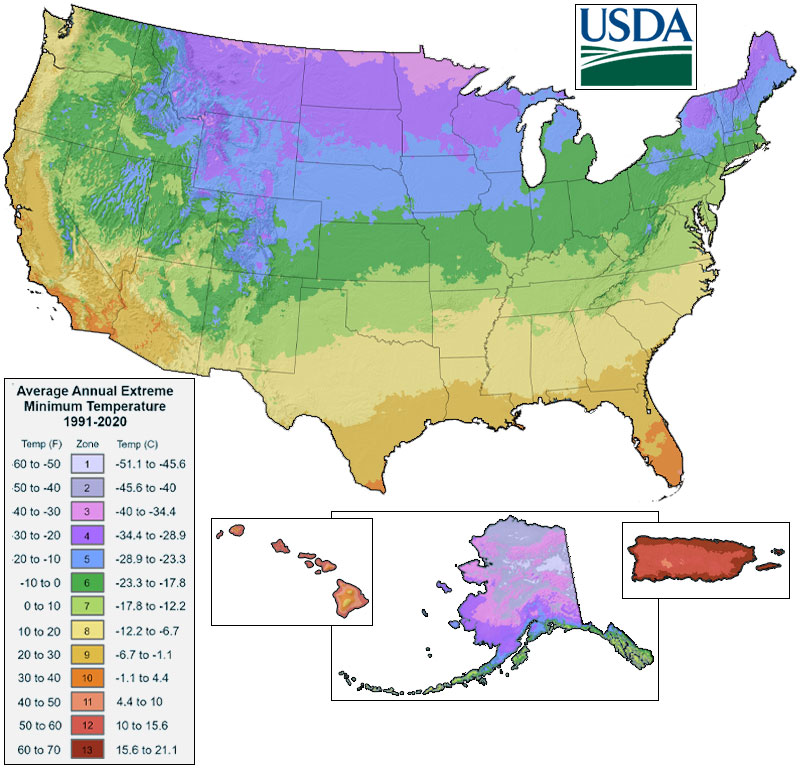USDA Hardiness Zones
What are the main differences between an Annual or Perennial?
Annuals and Perennials vary depending on where you live. If you want a perennial, shrub, or tree to survive and grow year after year, the plant must tolerate year round conditions in your area, such as the lowest and highest temperatures and the amount of rainfall. If you are Zone 5 any plant that is Zone 5, 4, 3, 2 and 1 would be a perennial in your area, anything zone 6, 7 8, 9 or 10 would be an annual. Certain areas of your yard could be hot spots and might be able to tolerate one zone higher.
Note: If the map that displays your zone appears inaccurate, you may be in a microclimate.
What is a microclimate?
A microclimate is a local atmospheric zone where the climate differs from the surrounding area. The term may refer to areas as small as a few square feet (for example a garden bed) or as large as many square miles (for example a valley). Microclimates exist, for example, near bodies of water which may cool the local atmosphere, or in heavily urban areas where brick, concrete, and asphalt absorb the sun’s energy, heat up, and reradiate that heat to the ambient air: the resulting urban heat island is a kind of microclimate.
Another contributory factor to microclimate is the slope, or aspect. South-facing slopes in the Northern Hemisphere and north-facing slopes in the Southern Hemisphere are exposed to more direct sunlight than opposite slopes and are therefore warmer for longer.
The area in a developed industrial park may vary greatly from a wooded park nearby, as natural flora in parks absorb light and heat in leaves, that a building roof or parking lot just conducts back to the air. Solar energy advocates argue that widespread use of solar collection can mitigate overheating of urban environments by absorbing sunlight and putting it to work instead of heating the local surface objects.
A microclimate can offer an opportunity as a small growing region for crops that cannot thrive in the broader area; this concept is often used in permaculture practiced in northern temperate climates. Microclimates can be used to the advantage of gardeners who carefully choose and position their plants. Cities often raise the average temperature by zoning, and a sheltered position can reduce the severity of winter. Roof gardening, however, exposes plants to more extreme temperatures in both summer and winter.
Find your plant hardiness zone here.

